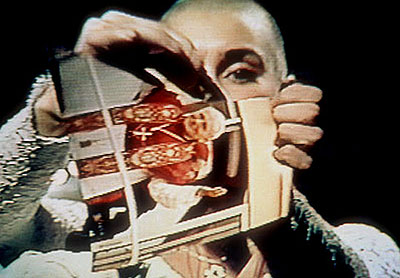Maggie and Terre Roche, Seductive Reasoning (Reissue)
Published on February 21st, 2012 in: Current Faves, Feminism, Music, Music Reviews, Reviews |By Chelsea Spear
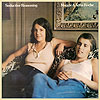
One could pinpoint 1975 as one of the first years of “The Woman in Rock.” Patti Smith’s Horses had just hit the racks; Heart released their first single and began recording their debut album; and The Runaways and Blondie had just formed. All these artists and bands created fierce and highly idiosyncratic rock, and their various images—tough, cathartic, slightly cartoonish—would inspire many girls to start making music.
(more…)
What Is The Deal With Lana Del Rey? A Timeline
Published on February 2nd, 2012 in: Critics/Criticism, Feminism, Media, Music, Teh Sex, The Internets |I never even heard of Lana Del Rey until I saw this posted on a friend’s Facebook wall on January 14: “What is this Lana Del Rey shit?”
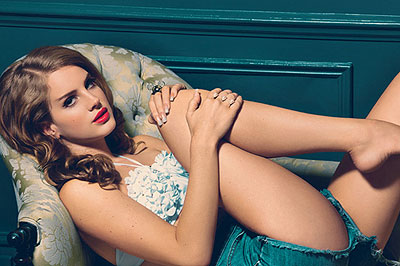
It was, of course, a reference to that infamous, scandalous, controversial, polarizing (pick one or come up with your own) Saturday Night Live performance. I don’t watch SNL so I didn’t see it.
The next day, January 15, another Facebook friend posted a link to Lana Del Rey’s video for “Born To Die.” I listened to it. I loved her voice and I thought the song was rather intriguing and different. Del Rey was certainly beautiful, with a distinctive look and sound. I watched a few more videos of hers “Blue Jeans,” “Video Games,” and “Mermaid Motel.” They were all good.
Then I started reading online about the backlash before the SNL backlash. How Del Rey was an indie poseur, blah blah blah. I felt bad for the poor girl. I felt like if everyone was going to hate on her, I was going to like her just to spite people. (I can’t help it; it’s what I do.)
Other than posting a link to the “Born To Die” video on my own Facebook wall and a link to the January 16 Brian Williams email article on Gawker, I have not posted much about her online. Yet I couldn’t escape the haterade that everyone on the Internet seemed to be drinking. It was everywhere I looked and I wasn’t looking for it. Within about a week, she came up in a real-life conversation and that’s when I started Googling her.
New York Magazine‘s Entertainment section has a nice timeline of events that you can check out here. I admit it looks like I’m copying them with my own timeline below, but mine is a bit different.
Rather than try to dissect and comment on each and every blog post I’ve read about Lana Del Rey (which would surely require at least a week and I do have other things to do) or even the ones I’m linking below, I’m just going to include some salient quotes and let you be the judge.
At this point, you’re going to think what you want to think about Lana Del Rey so maybe you’re thinking “why bother?” I will point out that these links are available to everyone with a computer and an Internet connection. It seems like people (including music blogs and others) are content to follow the meme of the moment without questioning it (or the biases of the blogosphere, much less their own biases) or even doing their own research. I wanted to do my own research and decide for myself. So here you go.
Why Sinéad Was Right
Published on January 30th, 2012 in: Feminism, Issues, Music, Oh No You Didn't, TV |By Emily Carney
On October 3, 1992, Sinéad O’Connor was the musical guest on Saturday Night Live. Her first performance of the night was the song “Success Has Made a Failure of Our Home” from her album of standards, Am I Not Your Girl? Nothing seemed remotely untoward until her second performance of the night, an a capella version of “War” by Bob Marley. Most of us know what happened at the end of that performance, but in case you missed the show or don’t know anything about Sinéad O’Connor, let me refresh you: She took a picture of then-Pope John Paul II, ripped it in half, and shouted “Fight the real enemy!” The performance was never replayed again. Sinéad was attacked mercilessly by Catholics the world over for her gesture and, to this day, this incident remains one of the most controversial things ever aired on live television in the United States.
Valerie Solanas: Who Shot Andy Warhol?
Published on January 30th, 2012 in: Art, Books, Feminism, Issues, LGBTQ, Movies, Oh No You Didn't |In June of 1968, a woman named Valerie Solanas rode the elevator up to The Factory, Andy Warhol’s loft. In the elevator with her was Andy Warhol himself. In the Factory’s office was Mario Amaya, an art editor from London; Fred Hughes, one of Warhol’s assistants; and Paul Morrissey, Warhol’s executive producer. Morrissey walked into the bathroom. Within a few minutes, Solanas pulled out a .32 caliber gun and shot Warhol three times. She then shot Amaya in the hip. Hughes begged her to stop. When she fired the gun at him, it jammed. Just then, the elevator doors opened and Hughes told her get on. So she did.
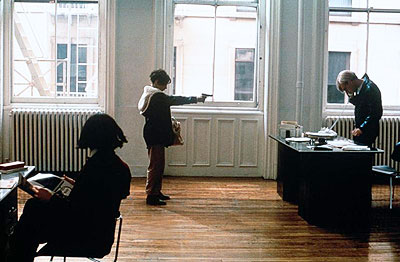
Screencap from I Shot Andy Warhol, 1996
Soon after, Valerie turned herself in to police. When questioned by the media outside of the police station, Valerie said that her reasons for shooting Warhol were “very involved. Read my manifesto and it will tell you what I am.” Solanas served a three-year sentence for attempted murder and died in 1988.
Over 40 years have passed since the shooting, but people are still asking the question “Why?”
Scandal In The 21st Century: The Different Faces Of Irene Adler
Published on January 30th, 2012 in: Books, Feminism, Issues, LGBTQ, Movies, Oh No You Didn't, TV |By Lisa Anderson
To Sherlock Holmes, she is always the woman. I have seldom heard him mention her under any other name. In his eyes she eclipses and predominates the whole of her sex. It’s not that he felt any emotion akin to love for Irene Adler. All emotions, and that one in particular, were abhorrent to his cold, precise, but admirably balanced mind . . . He never spoke of the softer passions, save with a gibe and a sneer . . . And yet there was but one woman to him, and that woman was the late Irene Adler, of dubious and questionable memory.
—”A Scandal in Bohemia,” by Sir Arthur Conan Doyle
In recent years, two new versions of the stories of Sherlock Holmes have captivated viewing audiences. One is the film version starring Robert Downey, Jr. The other is the BBC Television version with Benedict Cumberbatch as the lead. Both versions make good use of characters that have either been portrayed very differently or not used as extensively in other incarnations of Holmes stories. For example, both Jude Law and Martin Freeman portray John Watson as a much better sidekick than did Nigel Bruce and others. Mycroft Holmes, Sherlock’s smarter older brother, gets screen time and importance in both the movies and the television show. However, none of Arthur Conan Doyle’s characters has seen their stock increase more in these retellings than Irene Adler. SPOILERS BEHIND THE CUT!
(more…)
Melody Walker, Gold Rush Goddess
Published on January 3rd, 2012 in: Current Faves, Feminism, Music, Music Reviews, Reviews |By Kai Shuart

In the interest of full journalistic disclosure, I have to say that I know Melody Walker—the artist behind this CD—personally; I had the privilege of playing with her many times when we were both attending Humboldt State University and seeing her talent grow from her early days playing at Muddy Waters. We remain great friends to this day.
However, that does not diminish the fact that this is an outstanding record. The opening title track, “Gold Rush Goddess” intertwines the earthy images of dynamited mountains and the lusty image of a woman dancing for money and melds them into a cohesive allegory for exploitation, as evidenced in the lyric “Come down off that mountain/come down all you men/but don’t you come knockin’ without money in your hand.”
(more…)
Top Five 1970s Films Directed by Women
Published on December 5th, 2011 in: Dancing Ourselves Into The Tomb, Documentaries, Feminism, Issues, Listicles, Movies, Staff Picks, Top Five Lists |By Chelsea Spear
If your knowledge of the American New Wave begins and ends with the studio films of the era and Peter Biskind’s Easy Riders, Raging Bulls, you may regard 1970s Hollywood as a roiling cauldron of testosterone. The pictures of the day may have featured more complex female protagonists, and may have ushered in an era of unconventional actresses like Shelley Duvall, Ellyn Burstyn, and Barbara Streisand. However, the exploits of Altman, Bogdanovich, Hopper, and Scorsese and their second-string peers left little room for emerging distaff talent.
As any good artist does, however, the female directors of the 1970s found a way around the system and were able to make feature films. Many of these saw distribution at mainstream houses, while others languished, undiscovered until recently. Here are five features helmed by intrepid lady lensers during the Easy Riders/Raging Bulls era.
(more…)
Linda Ronstadt: Not So Easy
Published on December 5th, 2011 in: Dancing Ourselves Into The Tomb, Feminism, Issues, Music |By David Speranza
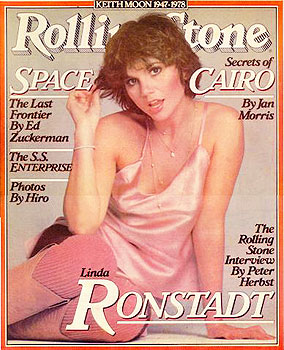
She’s not in the Rock & Roll Hall of Fame. She’s shockingly absent from Rolling Stone‘s list of Top 100 Singers. And yet in the 1970s she went where no woman had gone before, a female superstar in a male realm, clearing the way for the generations of pop, rock, and country superstars to come. She was featured on six Rolling Stone covers, the covers of Time and Newsweek, and received such appellations as “queen of rock,” “first lady of rock,” “rock’s superwoman,” and “top female pop singer of the decade.”
She was the first artist since the Beatles—and the first woman ever—to have two Top Five singles at the same time. Her string of multi-platinum albums and unprecedented (for a woman) arena rock shows made her the highest-paid female musician of the decade. Critical approval included a satchel-ful of Grammys, multiple Vocalist of the Year awards, and a date singing “The Star Spangled Banner” at Game Three of the 1978 World Series. Her voice was a technically perfect yet heartfelt instrument capable of expressing a multitude of emotions in an intimidating array of styles. Where female rockers were concerned, there was Linda Ronstadt—and there was everyone else.
(more…)
Arkham City: World Of Echo
Published on November 30th, 2011 in: Comics, Feminism, Game Reviews, Gaming, Movies, Over the Gadfly's Nest, Reviews, TV |By Paul Casey
Arkham City, released October 21, is an important Batman story. While perhaps not as unexpected as its predecessor, Arkham Asylum, Rocksteady have turned in a Batman game that builds on that one’s many successes. As someone who has been obsessed with Batman for a couple of decades, with changing degrees of intensity, Arkham City is literally a dream come true.
To have an interactive slab of Gotham City with such extremely detailed and well observed parts of Batman’s long history concealed for your own brand of detective work . . . well, it makes me feel both old and lucky to have been around this long. That the game is actually a wonderful, expertly paced, physical experience is something else entirely. As with Arkham Asylum, it still seems quite unusual to have a great comic book like Batman finally tap into why video games are such an exciting medium.
Mixtape For The Apocalypse: An Interview With Author Jemiah Jefferson
Published on September 29th, 2011 in: Books, Feminism, Halloween, Horror, Interviews |By Lisa Anderson
With electronic books pulling ahead of paper books in popularity, self-publishing is getting easier and easier. One of the pioneers on this new frontier is Dark Horse comics editor and Popshifter contributor Jemiah Jefferson. Jemiah and I met up over IM to discuss her recently self-published novel, Mixtape for the Apocalypse, as well as her previous work.
(more…)
